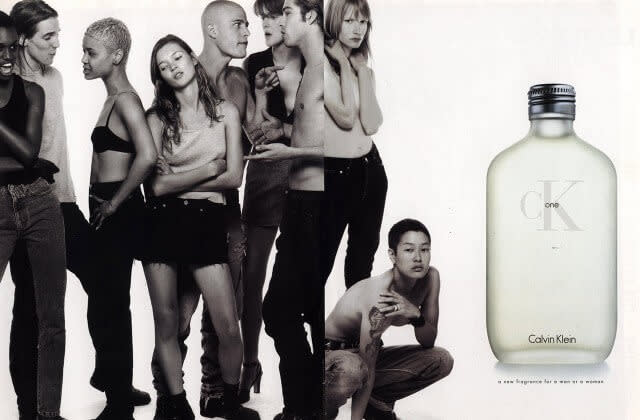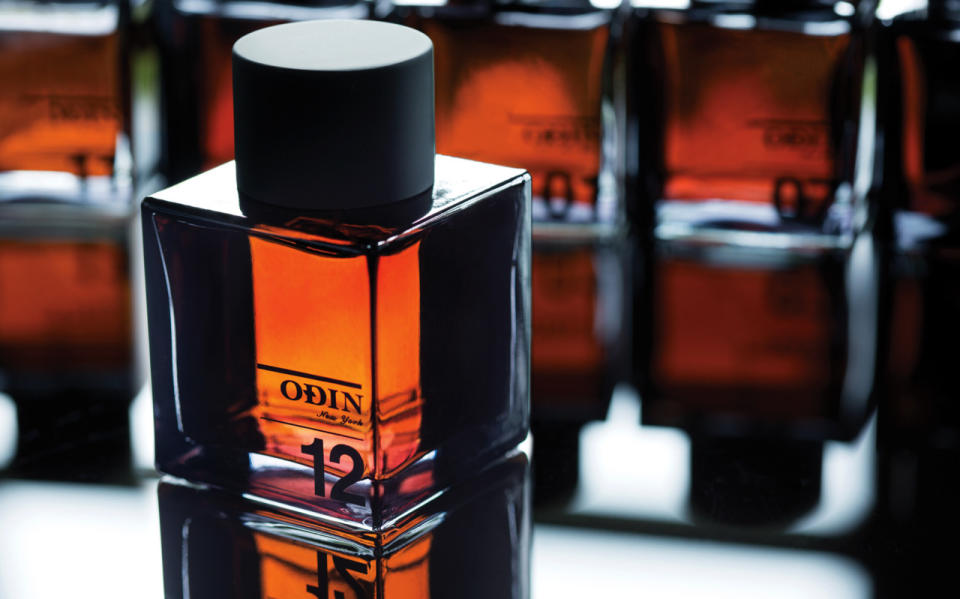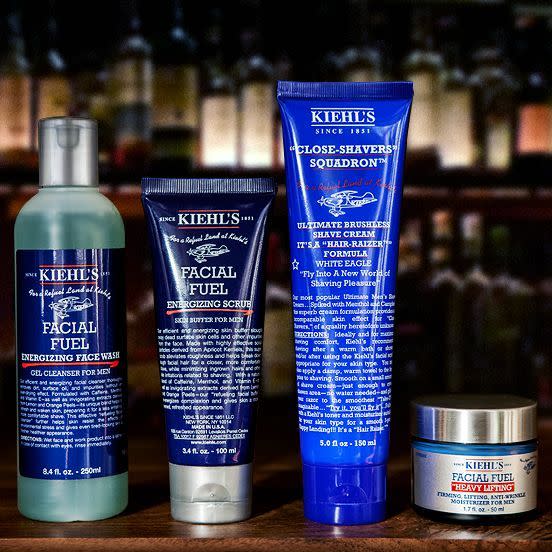Are Unisex Beauty Products Just a Bunch of Nonsense?

CK One is an iconic unisex fragrance. (Photo: Calvin Klein)
Ever since the notable launch of CK One in 1994, the idea of fashionable unisex beauty and grooming products has steadily grown. Today, more than 20 years later, unisex is a lucrative marketing strategy for an increasing number of companies, giving birth to independent, luxury, and mass-market products alike.
Following the trajectory of “inoffensive” and “neutral” beauty products like CK One into the new millennium, new products are released every year purposefully devoid of any clear signifiers about which gender should be most tantalized by its scent, features, enhancements, or benefits — but with perhaps a bit more edge, flair, and flavor. As gender itself becomes more and more fluid for new generations of consumers, the beauty and grooming industry has more fully embraced this new direction after decades upon decades of encouraging men to buy one product in a blue box and women one in a pink box (at a notably higher price). But is unisex necessarily something for the new millennium?
“Unisex is bulls***,” says Kelly Kovack, the founder and CEO of Beauty Matter. Perhaps a surprisingly bold statement, but one that comes with 15 years of experience in everything from merchandising, to product and brand development, to creative strategy for independent and multibillion-dollar brands. With this much time in the trenches in an industry built on making people look and feel good, perhaps she ought to know.
Among Kovack’s accomplishments, and one of her more notable projects in recent years, was the creation and launch of Odin New York, a fragrance brand in collaboration with the retail fashion brand Odin — for which she won numerous industry awards. And it’s a product line that intentionally dismisses the traditional signs of masculine and feminine marketing. Kovack explains her strategy:
“Fragrance is not by its very nature male or female,” she says. “It’s completely subjective. But as marketers, we have defined what is perceived to be female or perceived to be male, and then we market it by name, by the color, by the note that we call out.” So, with Odin, she set out to try to something different. “It’s in a black bottle, it had a black box, and there are no market cues as to what you might be smelling … It was all very intentional because we wanted people to experience the fragrance and then decide whether they liked it or not, and not go into it with any preconceived idea.”

Odin New York is a fragrance brand with unisex scents. (Photo: Odin New York)
But isn’t that unisex?
“All of a sudden ‘unisex’ has become this trend. It has always been there. There are certain products that by their very nature are unisex but they just happen to be marketed to men or women. A face wash is a face wash … or shaving cream. I mean, the product has a function. The skin has sort of a biology and physiology behind it, so there are [only] a few products that would be specific to women or specific to men. When you really get down to it, it’s all marketing,” explains Kovack.
Those products that Kovack mentions fall into one particular area, according to cosmetics-chemist-turned-publisher Ron Robinson of BeautyStat.com, a 20-plus-year veteran in the industry. “There is a physical difference in men and women. One key difference is facial skin care. Men tend to have thicker skin, less sensitive skin, than women do. So that allows for perhaps higher levels of active ingredients to exfoliate or stimulate collagen development.” Even with these differences, says Robinson, “nothing will have adverse effects on men versus women if they choose to use each other’s products.”
And what explains the reinvigorated fascination and business growth around the concept of unisex beauty? “I think why unisex has become such a hot point is because indie fragrances are kind of on fire right now,” says Kovack. “Fragrance is a big dollar business for the beauty industry — and even for the fashion industry, through licenses — and then all of a sudden you have these indie brands that have come out of nowhere and almost upset the apple cart.”
Kovack continues, “You’re seeing retailers like Sephora change their format to accommodate niche fragrances, for example. And you’re seeing small brands have to be unisex because you need to sort of cast the widest net,” referring to brands like Le Labo, the Odin New York line, Aesop, Malin + Goetz, and others.
In addition to changing tastes in consumer preferences, the reinvigorated appeal of choosing products that don’t telegraph a gender orientation may come down to sheer simplicity. “Honestly, I think it’s just how we live our lives these days. We’re all really busy, and we’re all looking for ways to simplify our lives. So a lot of these products can be shared,” says Kovack.

Kiehl’s men’s skin care line. (Photo: Kiehl’s)
In fact, producing grooming products for more than a single gender has been around for some time, particularly in mass-market aisles. “There are certain beauty brands that tend to be more unisex: Jergens, Vaseline, Neutrogena. These are family products,” explains Robinson. “And you can even look at more prestige product lines like Kiehl’s, which has been around for a very long time.”
Despite new campaigns and product launches touting the “newfound” liberation of unisex makeup, fragrances, lotions, etc., unisex as a “thing” has been a “thing” for some time. And despite ingrained cultural preferences, who says a man can’t smell like flowers and a woman can’t smell like musk?
Perhaps it is fair, after all, to say unisex is a bunch of nonsense, but it may be more accurate to just say that unisex is us.
Let’s keep in touch! Follow Yahoo Beauty on Facebook, Twitter, Instagram, and Pinterest.
